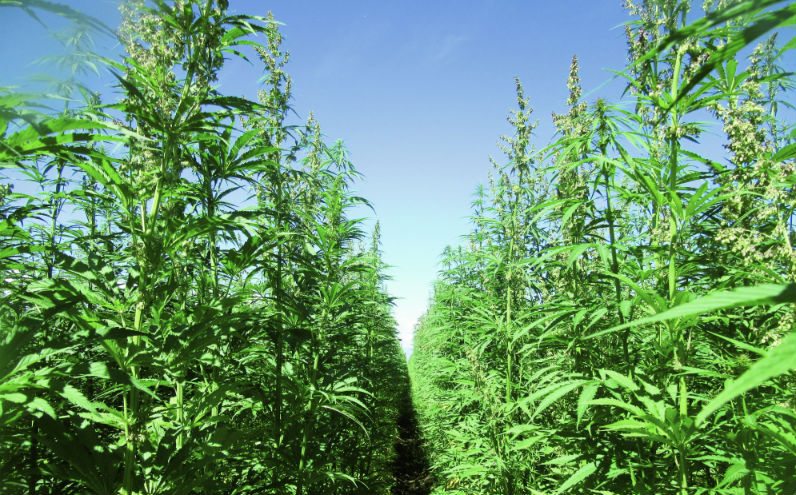Source: gpnmag.com

What was once counter culture is quickly becoming a mainstream agricultural market.
In 2014, with the passage of the 2014 Farm Bill, one of the fastest emerging agricultural industries began. What was once counter culture is now becoming mainstream as more states implement industrial hemp programs. But industrial hemp was never really absent from the U.S. market, it was only absent from American growers’ pallet of crop choices.
The American market is the largest market for industrial hemp in the world with an abundance of products being imported from countries like Canada, China and a host of European countries to meet the demand.
Imports of hemp fiber have grown from about 1,500 metric tons in 2013 to almost 4,000 metric tons in 2015. At the same time the oil and grain market grew from less than 500 metric tons to almost 3,500 metric tons.
It isn’t that hemp won’t grow in the United States. It’s because you couldn’t legally grow it in the United States. Hemp is the low THC (the component that gets you high) sister to marijuana. With a THC content of 0.3 percent or less, you simply can’t get high from hemp. Yet it remains a Schedule I drug along with heroin and marijuana that can reach 30 percent or more THC. It is that tie to the higher THC marijuana that demonizes industrial hemp. And since you can only tell industrial hemp and marijuana apart by doing a test in the lab, the task of separating them in the eyes of many is difficult.
Things Are Changing
Congress continues to reduce the restrictions on the cultivation of industrial hemp and more states are allowing the cultivation of hemp within their borders. And the industry is emerging. In Colorado alone in 2014, the state had 259 registrations for 1,811 acres. Many of those registrations never intended to actually plant industrial hemp but applied for historical purposes as applicants wanted a historical document authorizing the cultivation of hemp in more than 70 years. Of the registered acres, only about 200 acres were actually planted. In 2015, there were 301 registrations accounting for 3,657 acres outdoor and an additional 570,000 square feet of indoor production space. And that growth has continued in 2016 with more than 400 registrations totaling 9,020 acres outdoors and 1.2 million square feet indoors. Those growth trends are reflected nationally. Since the passage of the 2014 Farm Bill, the industry is now estimated to be more than 16,000 acres of industrial hemp grown in 2016.In any emerging industry things change rapidly. In 2014, many registrants were enthusiastic but undercapitalized, had limited agronomic or horticultural experience and had no long term business plan. Operation size was relatively small, most under an acre. That is changing.
Crop and business consultants are entering the market so agronomic practices are improving and business plans are better developed. Many operations are more financially stable as investors and venture capitalists look for the right opportunities. And individual registered areas are much larger, many into the hundreds of acres and indoor sites of 10,000 square feet or more isn’t uncommon.
Opportunities to Consider
For a product that the Congressional Research Committee has identified more than 25,000 uses, the hemp industry has a lot of opportunities for growers as well as others to explore. Long used for fabric that stands the test of time, hemp can also be found in products that unsuspecting users wouldn’t recognize as hemp.On a recent trip to Utah and Montana, I found the shampoo and conditioner to be hemp based. Many car manufacturers use hemp composites for their strength and the light weight adds to the vehicles fuel efficiency. There are protein powders and health food snacks that contain hemp seed, which is rich in Omega-3 and Omega 6 oils. Hempcrete, a combination of hemp fiber and lime adds a new lightweight building material option for home or office construction and the fiber alone makes a great insulation.
One product that has attracted early attention in this emerging market has been cannabidial or CBD. Made famous on the show “Weed” on CNN by Sanja Gupta, this high value cannabinoid is extracted from the flowering portion of the cannabis plant. CBD is used for a variety of purposes most notably the treatment of epileptic seizures. Researchers continue to explore the values of this and other cannabinoids for their healing or wellness value.
Most often varieties selected for CBD production are produced through vegetative propagation. Some of this material is planted outdoors in the field, but it is also being produced in greenhouses using the same high technology greenhouse practices and crop scheduling used for bedding plant production. Cuttings are transplanted into large containers and “programmed” to finish in time to meet processing schedules.
More to Come
Professional breeders are assisting in those efforts to make industrial hemp a programmable product. They are developing new varieties that can be dialed in and a crop can be schedule for days in the vegetative state before inducing flowering and days to harvest after flower induction. The same thing bedding plant growers use in making variety selections and scheduling their crops.Where will the industry be next year, in five years or even 20 years remains unclear. There are no answers in the crystal ball to what products will be the most profitable, which ones will disappear quietly and what new products that haven’t even been dream of today will be on the horizon.
What is becoming increasingly clear is this emerging industry is here to stay. The opportunities are almost endless and the road ahead will have a number of curves we can’t even see yet.
No comments:
Post a Comment